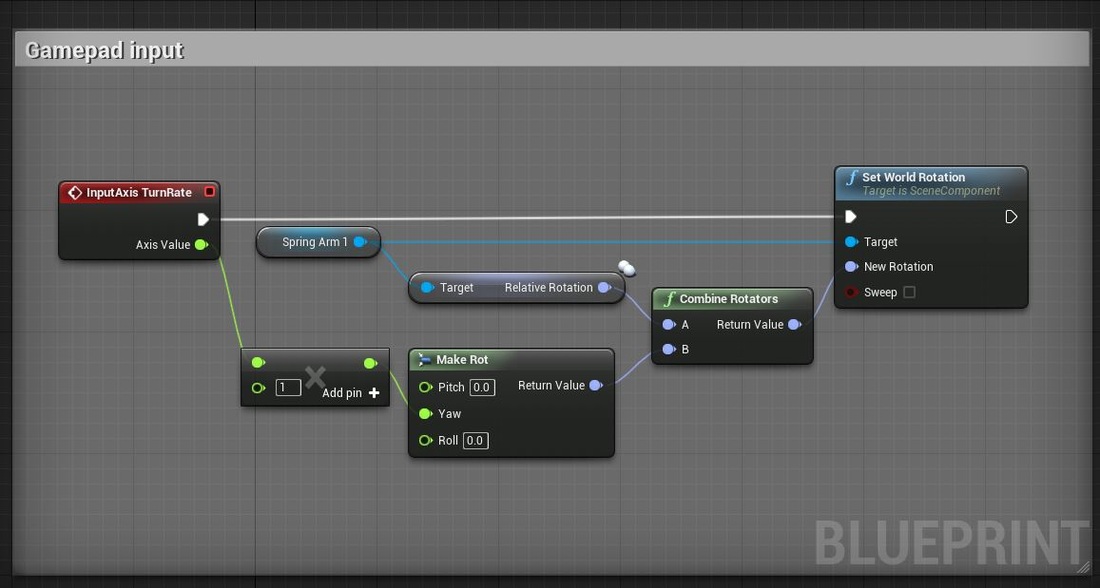I was recently introduced to a powerful tool in UE4 called the Timeline. All of my previous articles were created without any knowledge of this tool, but now I cannot ignore the fact it provides simpler and more robust solutions than my previous attempts. This weekend was devoted to creating a platformer style camera that is modelled after Tomb Raider 2013 as a warm up for using timelines. There will be no ledge grabbing, vaulting, climbing, or ice-picks in my prototype - so only jumping and landing from a drop will be covered here. My starting point is the default Third Person Blueprint in UE4.10.3 with no modifications except to create a basic test level that has a lot more jumping and height differences. (Aside: In full scale game production, this level would have all the different sizes and shapes - often called metrics - that the avatar could traverse. so locomotion systems, animations, camera, and controls could be tested before the game world is created).
- "Minimize unintentional camera motion whenever possible. This is especially true of cinematic sequences, but it is true to say that camera motion should be avoided unless it would either result in the camera being left behind by the player character, or the camera interpenetrating the player character. Slight or unintentional camera motion caused by reactions of the player character to environmental factors (or noise from player controller inputs) should be avoided. Similarly, if camera motion is directly linked to that of the player, it often results in an "unnatural" or "stiff" feeling camera.
- Ensure camera motion is smooth. Smooth, frame-coherent motion of the camera is necessary to avoid disorienting or distracting the player. Of course, smooth motion is normally achieved by velocity dampening, which has the adverse effect of allowing the target object to either accelerate away from the camera or worse, overtake and interpenetrate the camera. Nonetheless, smooth camera motion is of great importance and there are techniques available to assist the camera in cases where the player character is subject to rapid acceleration. Low-pass filter can help smooth out irregularities in movement especially when the camera motion is tied directly to that of the player character, where noise from unwanted player input may cause slight motion."
 |
The opposite effect is achieved in Tomb Raider when Lara Croft lands a jump, but the camera still has smooth motion throughout the landing.
The first rule of timelines is they can be used on Actor Blueprint Graphs, but NOT Actor Component Blueprint Graphs or Scene Component Blueprint Graphs. This can provide a conceptual barrier for someone who has not used them before, especially when it seems like adding a timeline to a Scene Component Blueprint Graph is the ideal solution. After realizing this limitation, I arrived at two possible options, and chose the latter after running into issues with the former:
- Run the timeline on the ThirdPersonCharacter to provide an intended location to the ThirdPersonCameraTarget, which parents a CameraBoom with a FollowCamera child.
- Run the timeline on the ThirdPersonCameraTarget by making it a pawn, completely separating the controller for the camera from the controller for the avatars movement.






 RSS Feed
RSS Feed